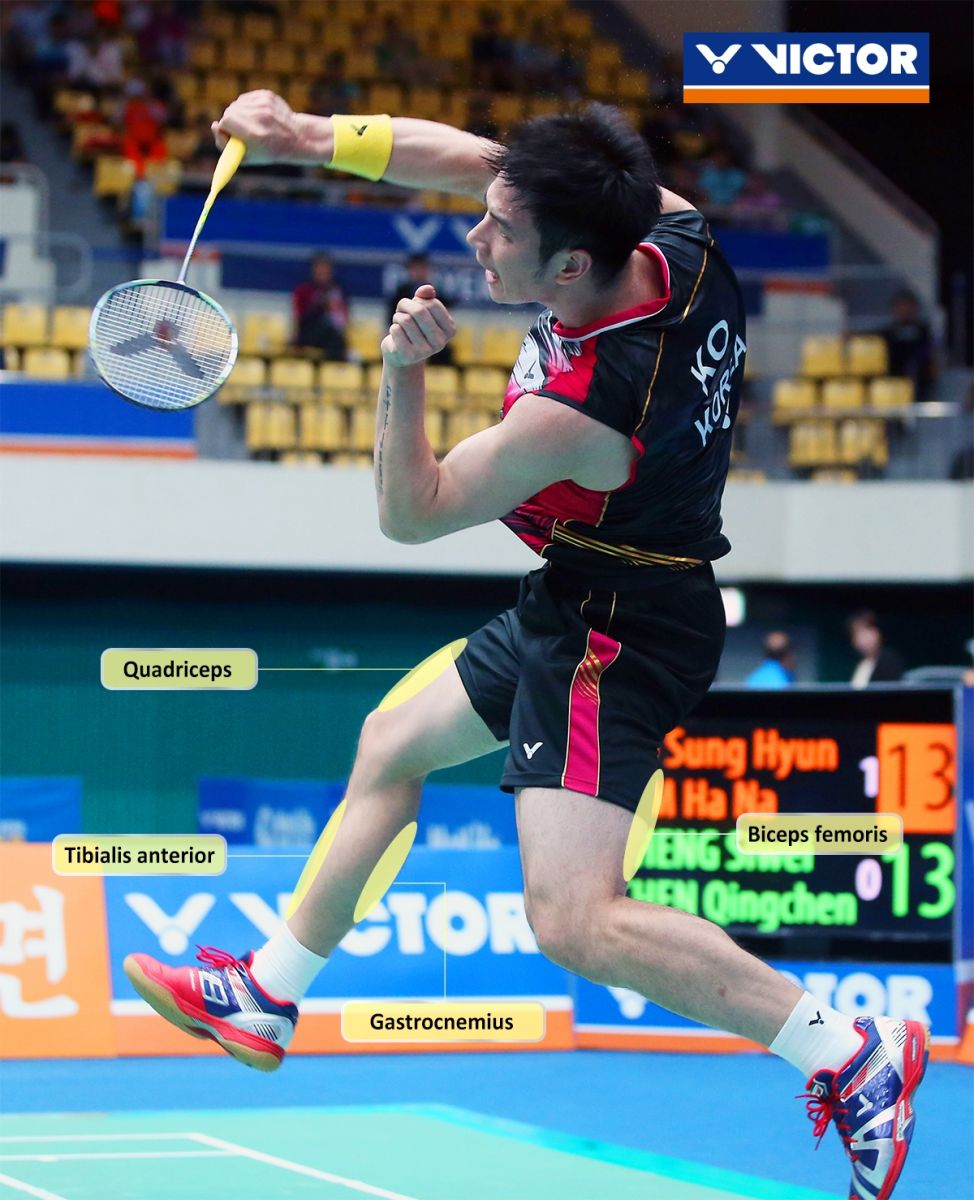Which muscle groups do we actually use when we play badminton? In other words, if you want to play better which muscles do you need to train specially?
Badminton is almost all-body sport and the scapular region of the upper limb, upper arm, forearm, abdomen and back, thighs and calves are all within the scope of our discussion, however, there is an important concept we’d like to share with everyone, that is, in the process of doing sports, muscles can be divided into three types: agonist, antagonist and synergist in accordance with different movements.
The muscles that carry out most body movements are agonist, driving various body movements through powerful contraction; these are supported by the antagonist muscles that are responsible for relaxing and extending muscles; the muscles that stabilize joints and support agonist muscles are the synergist muscles. We are able to smoothly complete every movement when we do sports because of the mutual pulling and coordination of the agonist and antagonist type muscles, making them like two strings that control the movements of a puppet.
How do our muscle groups move when we attack at the net?
Taking attacking at the net as an example, (shown in Figure 1,) we first bend our elbow a suitable amount as we prepare to hit the shuttlecock. For this bending movement, the biceps brachii is the agonist muscle; the contraction of the biceps brachii pulls the forearm close to the body; the triceps brachii plays the role of antagonist muscle, adjusting the speed the elbow bends, the agonist muscle and antagonist muscles acting simultaneously to maintain balance.
Figure 1: VICTOR star-Goh Liu Ying
Conversely, when we are looking for an attacking opportunity, we will straighten the elbow to hit the shuttlecock powerfully. At this time, the triceps brachii is the agonist muscles, the contraction of the muscle taking the forearm far away from the body to complete the arm-straightening movement; the biceps brachii is the antagonist muscle, acting in unison with the agonist muscle.
Figure 2: VICTOR star-Ko Sung Hyun
When we deliver a leaping smash what muscle groups do we use?
In the process of jumping from a semi-squatting position to hit a smash, the quadriceps and biceps femoris in our thighs, and gastrocnemius and tibialis anterior in our lower legs act together, swapping from agonist to antagonist roles!
When we squat, the tibialis anterior is the agonist. The contraction of the tibialis anterior, moves the front-side of the lower leg and tiptoes together, while at this time the gastrocnemius is the antagonist muscle, responsible for relaxing and supporting the tibialis anterior
When we jump up, the gastrocnemius is the agonist muscle; its contraction moves the front of the lower leg and tiptoes apart, in doing so completing the jumping movement.
After we understand the principles behind muscles contraction and operation we can read related books or keep paying attention to VICTOR”s Badminton Classroom to get to know every muscle you will use in badminton. By understanding the muscles used in each movement, you can carry out special training directed at certain muscle groups and thus indirectly improve the movements you want to make better! For example, when using six-point footwork to move forward to receive the shuttlecock, if your feet are in pace but your upper body leans forward like a car with failed brakes, it is very likely that you don’t have sufficient strength in your thighs’ quadriceps and gastrocnemius in your calves. So, if you are a player who suffers from this situation you can do some training to strengthen these muscles and, in so doing, improve the problem of unstable center of gravity when you use the footwork.
This analysis explains just one movement; actually, when the human body is exercising there are usually several types of simultaneous muscle contraction; in the future they will be introduced to everyone. We hope everyone looks forward to this!


